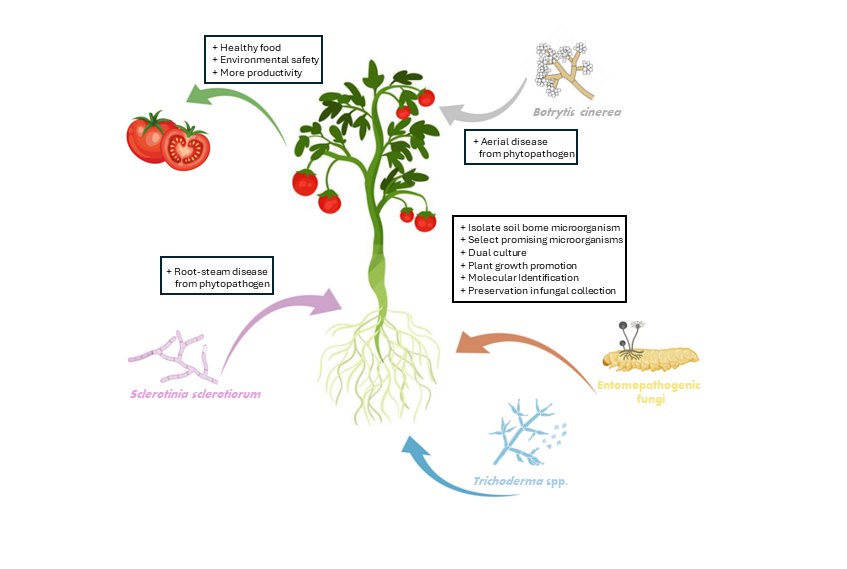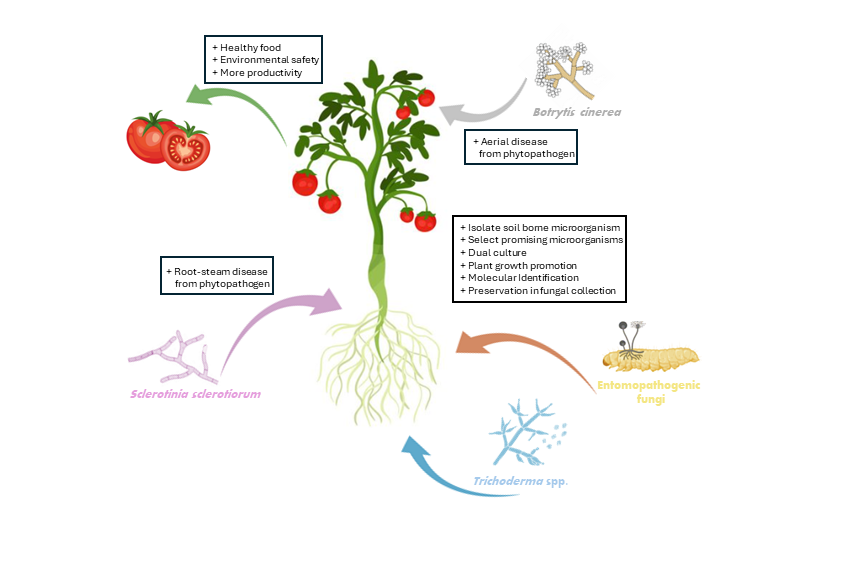Selection of fungal isolates from Buenos Aires, Argentina, as biological control agents of Botrytis cinerea and Sclerotinia sclerotiorum
DOI:
https://doi.org/10.48162/rev.39.138Keywords:
entomopathogenic fungi, biological control agents, molecular identification, dual culture, plant growth promotionAbstract

This work aimed to select promising microorganisms as biological control agents (BCA). Forty-one soil samples were obtained from florihorticultural farms located in Buenos Aires, Argentina. Insect trap techniques and soil serial dilutions were used to obtain isolates of entomopathogenic fungi and fungi of genera Trichoderma, respectively. A total of 20 isolates included five Metarhizium and 15 Trichoderma. The isolates were lyophilized and deposited as reference cultures in the Mycological Collection of the Centro de Estudios Parasitológicos y de Vectores (CEPAVE). We performed dual culture studies of the isolates collected against the pathogens Botrytis cinerea Pers. (1797) and Sclerotinia sclerotiorum (Lib.) de Bary (1884). Eleven isolates were selected for growth promotion studies in tomato plants (Solanum lycopersicum L.). The isolates of Metarhizium taii Liang & Liu (1991) CEP-722, CEP-723 Trichoderma afroharzianum Chaverri, Rocha, Degenkolb & Druzhinina (2015) CEP-753 and CEP-754, molecularly identified by amplification of the ITS and TEF1α zones, presented the best results in the dual culture and growth promotion tests. Subsequent studies will evaluate virulence of fungal strains in insects.
Highlights:
- Entomopathogenic fungi are common fungi present in the soil of many environments.
- Molecular identification is the only way to identify ascomycete fungi at the species level with a high percentage of reliability.
- Plant growth promotion produced from the inoculation of tomato plants with entomopathogenic fungi has great potential for agriculture.
Downloads

Published
How to Cite
Issue
Section
License
Copyright (c) 2018 Revista de la Facultad de Ciencias Agrarias UNCuyo

This work is licensed under a Creative Commons Attribution-NonCommercial-ShareAlike 3.0 Unported License.
Aquellos autores/as que tengan publicaciones con esta revista, aceptan las Políticas Editoriales.










.jpg)




